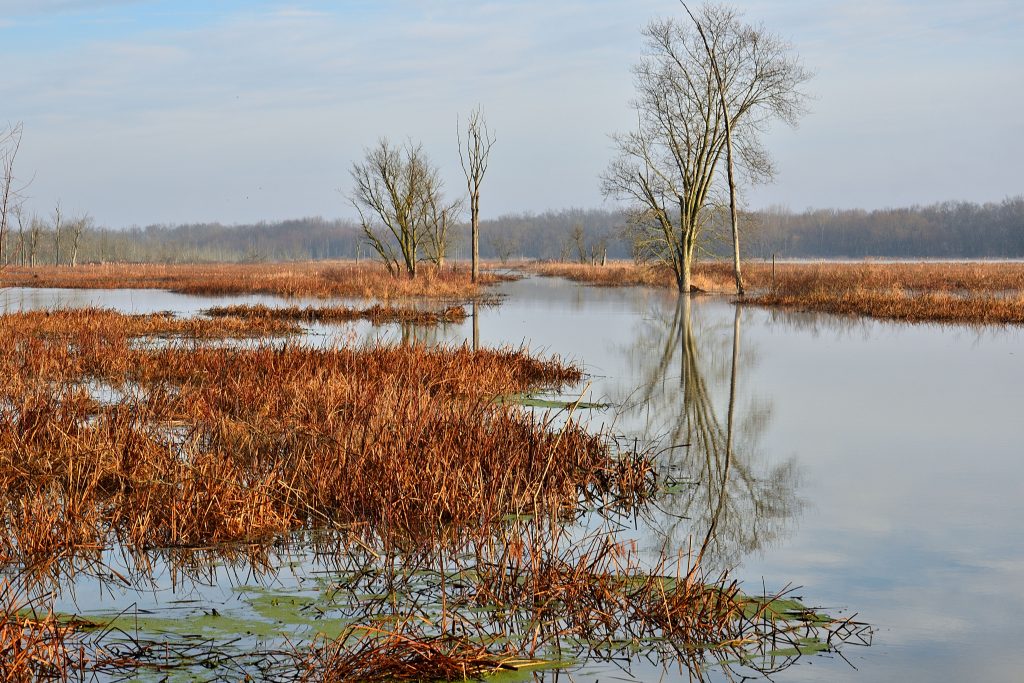There is apparently a school of thought among some hobby photographers that you pretty much always want to have your camera on a tripod. I see people out shooting birds in flight (or trying to) in full daylight, with their camera sitting snugly on a tripod. And I think: why?
A tripod is an essential tool to have, if you’re going to get serious about photography, but it isn’t the one-answer tool for every situation. And when you don’t really need one, leave it in the car. (Or in the closet, or wherever you leave it.) Tripods are a pain to drag around everywhere; they slow you down and clutter your shooting space; they limit your ability to work with unusual perspectives; they’re a tripping hazard. When you really need one, by all means use it. But for most daylight situations, most of the time, most people don’t need to have the camera on a tripod.
I can think of some specific reasons to use a tripod:
- You require a long exposure, meaning a slow shutter speed. This would include situations like very low light (such as nighttime shots or astrophotography), or going for a specific motion effect (such as blurring a stream or waterfall to get that “silky” look which is so popular right now). If your shutter speed is slow, definitely use a tripod
- You’re using a very long focal length, and the lens or camera doesn’t provide image stabilization (or insufficient IS) to keep the shot steady. Even then, in many cases a monopod is a better option, if you know how to use it and it provides sufficient stability.
- You need to leave your camera aimed carefully for an extended period of time, for multiple shots (such as a time-lapse, or HDR sequence), or while you wait for an event to occur (King Ralph will come through that door sometime in the next half hour, but nobody knows exactly when), and you can’t hold the camera in just the right position for very long by hand, or even with a monopod.
- You’re part of the picture: you want to set the camera, get in front of it, and snap a shot using the timer or a remote shutter release.
- You have a physical disability or affliction which makes it difficult or impossible for you to hold a camera steady.
- You’re not going to be there when it’s time to snap the shutter: you have set the camera for timed shots, or to be triggered by an external event (e.g. an animal walks past a motion sensor).
No doubt there are other circumstances that require a tripod, but you get the gist. They’re useful, even indispensable, when you cannot hold the camera steady enough, for long enough, to get the shot.
But when the light is good and the lens is not very long, hand-held is the way to go. It frees you up to move around, try different perspectives, walk back and forth or in and out, follow the flight of a bird, or the motion of an animal (or child), or track sports action. If you’re using a medium-long lens to shoot birds or wildlife or sports, try working with a monopod. It takes some time and practice to get used to one, but they give you much more freedom and mobility than a tripod, while providing much better stability than working purely hand-held. Shooting a picturesque lighthouse in good daylight, where your shutter speed is up around 1/500″ using a 50mm lens? Forget the tripod. You don’t need it; it will just slow you down, limit your mobility, and tie you to a specific frame of perspective. Ditch the tripod, and move!

This shot REQUIRED a tripod, as it was dim, pre-dawn, foggy light, necessitating a 1/2″ exposure (f/22, ISO-100) using a 50mm prime lens. Impossible to shoot hand-held.

This, however, was shot hand-held, because the light was better, allowing a 1/125″ exposure (f/11, ISO-100) with the same 50mm lens. I left the tripod in the car, and avoided having to lug it around the marsh.

And this shot, I can’t imagine getting without going hand-held: two USAF Thunderbirds in F-16 jets, flying toward each other at enormous speed, cross past each other a few feet apart. I panned the camera by hand, following one plane going from left to right, and caught this shot as the two crossed, right in front of the flagpole. (200mm @ f/5.6, 1/1600″, ISO-320)

